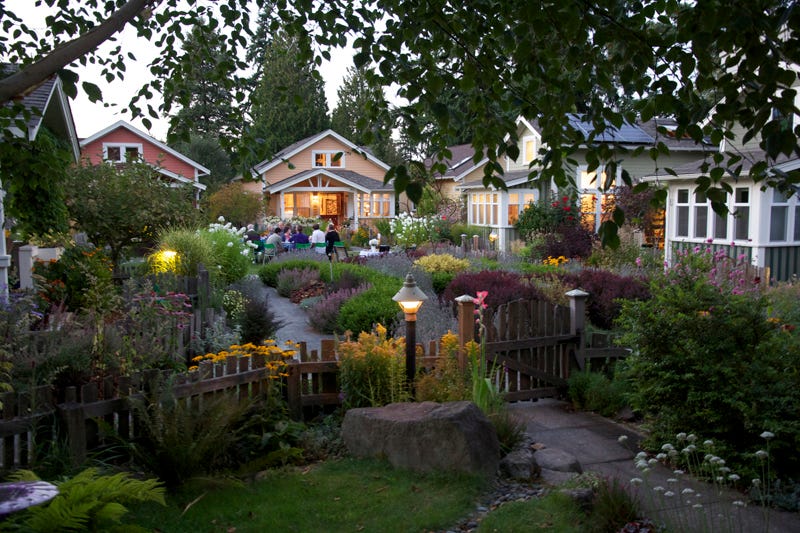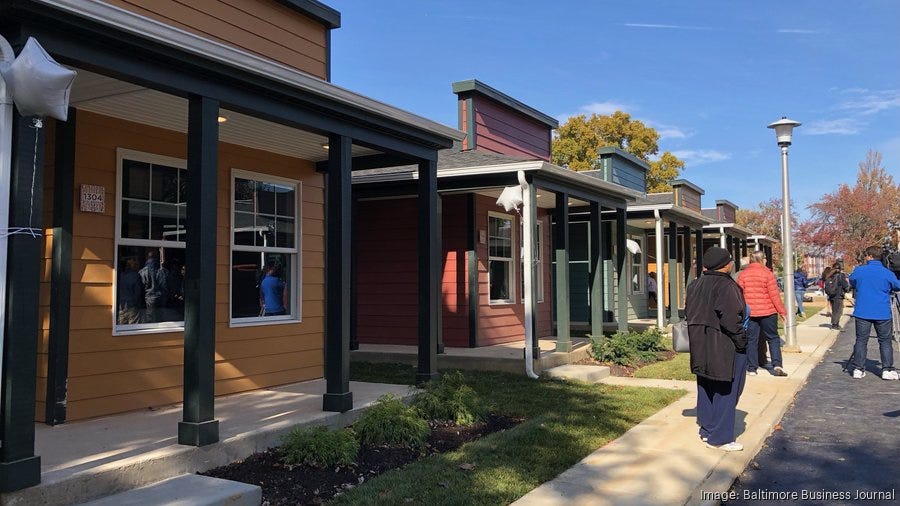What I've Learned from Faith-Based Housing
FBHI Fellow Eli Smith reflects on a year of research into the movement
Over the past year, I’ve learned a great deal from my research into faith-based housing in the United States. In addition to writing this blog, I’ve been working on my senior thesis in the Religion department at Dartmouth College, a project I’m currently wrapping up. As part of my research, I’ve kept up with developments in the faith-based housing movement and interviewed nearly two dozen people who are experts in the field or leaders who have completed projects themselves.
As I reflect on all I’ve learned, now feels like the right time to take a step back and offer a temperature check: Where does the movement stand today? What’s working? What’s not? And what are the key obstacles to building a lasting faith-based housing movement?
Where Are We Today?
Faith-based housing projects vary widely, but I’ve found it useful to group them into three general categories: large-scale, small-scale, and reuse.
Large-scale projects are exactly what they sound like—they’re typically large apartment buildings in urban areas that often rely on government subsidies and professional development teams.
Small-scale projects, on the other hand, are often small villages of “tiny homes.” These are generally cheaper, but they can vary significantly in their design, level of permanence, and size.
The last and perhaps rarest type of faith-based housing, reuse cases, involve converting an existing building, such as a fellowship hall or a school, into housing. This is often a difficult and costly process, but some churches have found incredible successes with these conversions.
I’ve found this framework to be helpful in clarifying the ambition and the scale of different congregations’ efforts, as well as their relationships with residents and their approaches to financing.
That said, the only true commonality across all faith-based housing efforts is how individualized each one is. Every project is shaped by a specific church’s identity, goals, resources, and property. No two are alike, and each one offers lessons that may or may not translate elsewhere.
Take, for example, the Episcopal Church of the Advocate in Chapel Hill, North Carolina. When they began constructing three tiny homes on their property, they discovered the site had previously been used as a dump. While it posed no health risks, it required crews to dig footers deeper, adding cost and delaying the project.
Is every project going to discover old refrigerators and tires beneath their site? Probably not.
But anyone who is interested in starting a faith-based housing project should know that they’ll probably stumble upon an equally strange and unexpected roadblock, and they should be prepared for that near-inevitability.
Stories like this are important as we enter the next phase of the movement. There’s a lot of hype right now around faith-based housing: states are introducing helpful legislation, and advocates and congregations alike are energized by the possibilities.
But with that hype comes some important questions: Is the enthusiasm justified? Why haven’t we seen even more successes so far?
Remaining Obstacles
Despite growing excitement, several challenges stand in the way of faith-based reaching its full potential.
First, zoning and building codes remain significant obstacles. This is a story that goes far beyond religious institutions, but churches who are new to the development process can be especially vulnerable. Even small requirements can prove overwhelming for inexperienced congregations.
Second, financing is often an uncomfortable process for houses of worship. Because these projects are new and uncertain, lenders remain cautious. Religious institutions are unconventional borrowers, and funding usually comes from a patchwork of sources. Projects that succeed typically do so thanks to relationships, creative partnerships, and a heavy dose of both luck and persistence.
Perhaps the biggest hurdle is a lack of awareness and understanding within congregations themselves. Every faith community has its own governance structure. That may make it easier to complete a property transition, but it can also make it much harder if the people signing off on decisions are not familiar with faith-based housing. For churches to succeed, congregations and clergy must be willing to learn a great deal along the way.
Though the lack of knowledge is an obstacle, the good news is that it is changing as more projects are completed and lessons are shared. People across the country are becoming more familiar with the concept of faith-based housing, and as they do, they’ll be more likely to support a project. As faith-based housing spreads, it’s likely that barriers will lift as more success stories are created.
Where Do We Go from Here?
In the years ahead, more religious institutions will explore new ways to use their property—and many will turn to housing. That’s where the Faith-Based Housing Initiative comes in. We're launching a new workshop series that connects incremental development experts with houses of worship, helping them collaborate and acquire the tools to bring their visions to life. Soon, we’ll be forming cohorts in cities across the country.
If you, your church, or your community is interested in exploring what faith-based housing could look like in your neighborhood, please reach out. We’re always looking for partners and would love to hear from you.

After I graduate in a few weeks, I’ll be taking some time to travel before settling in Richmond, Virginia, where I’ll be working as a carpenter with the eventual goal of becoming an incremental developer myself. As I transition into this new chapter, writing this blog weekly has become less feasible. So, we’ve made the decision to move to a monthly posting schedule for the summer.
But we’re not going anywhere.
The Faith-Based Housing Initiative is growing. As we move into this next phase, we’re looking to expand our network and welcome new voices. Expect to see more guest posts, a wider range of content, and continued momentum as we build this movement together.
If you'd like to contribute or get involved, don’t hesitate to reach out.
It’s an exciting time for faith-based housing—and we’re just getting started.
Eli Smith is a senior at Dartmouth College studying Religion. He is the Faith-Based Housing Initiative’s Research Fellow.




